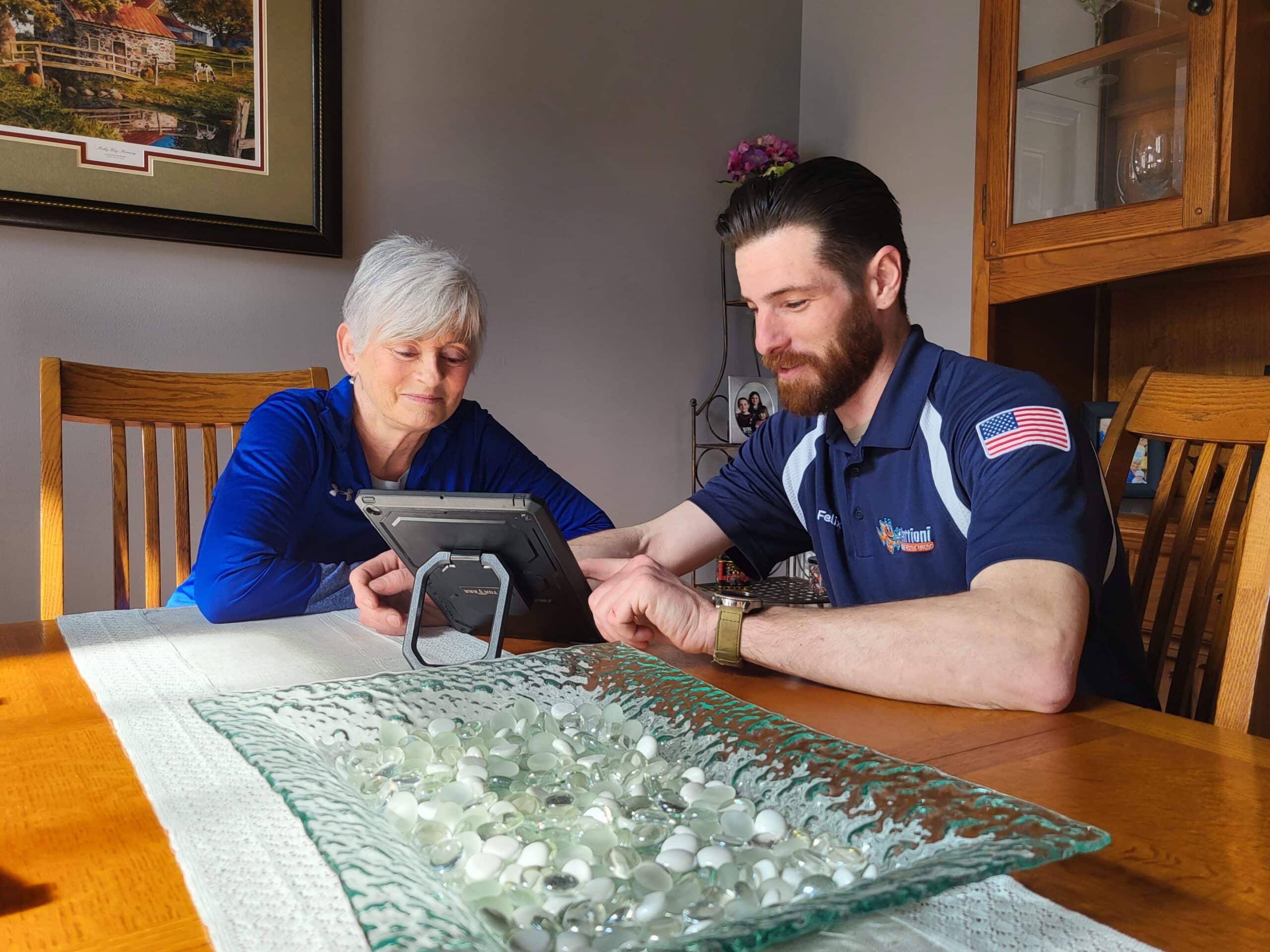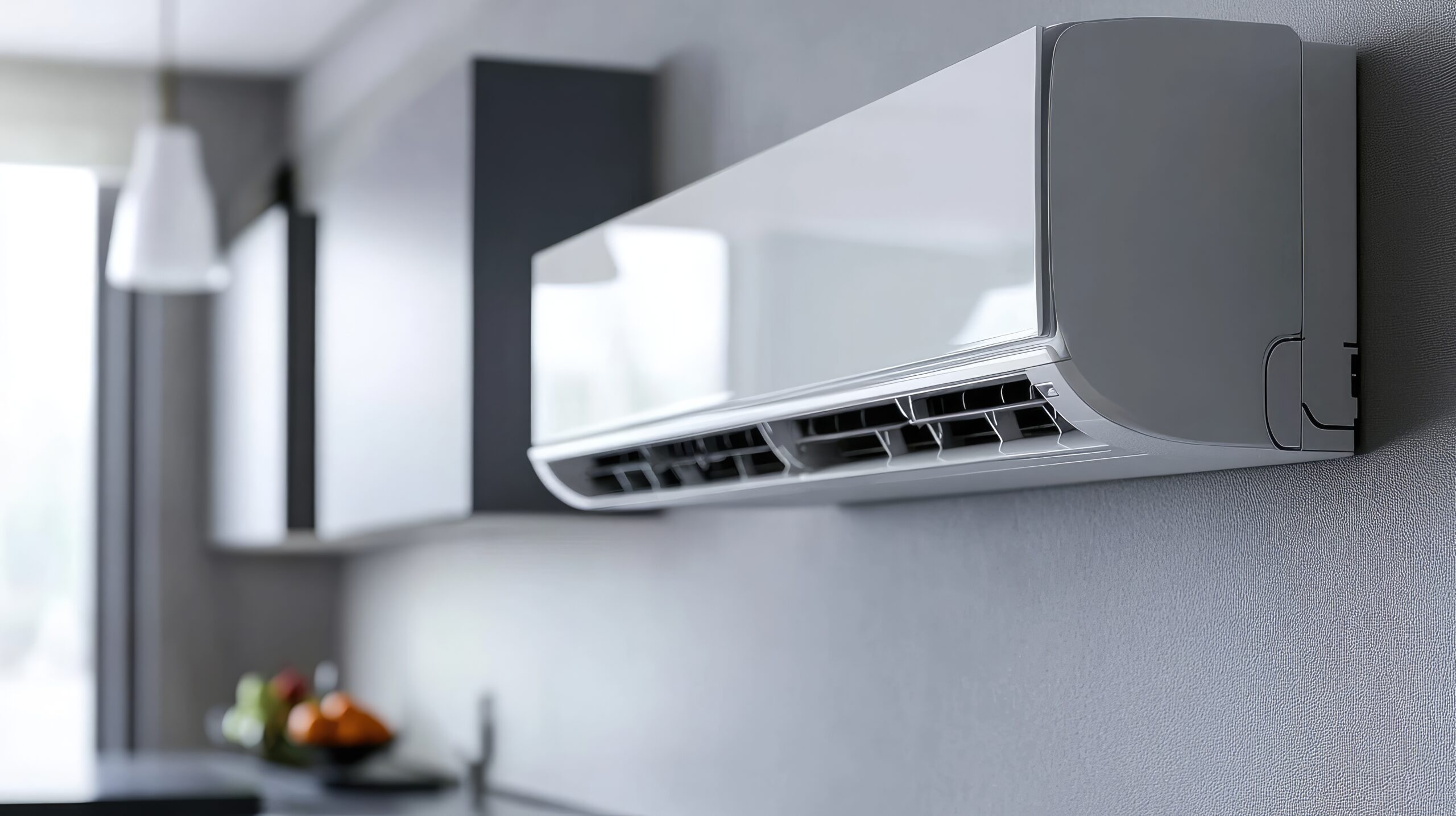|
Getting your Trinity Audio player ready...
|
Last Revised: 1/18/2025
If you’re a homeowner, you probably take every safety precaution possible to protect your loved ones and anyone who comes into your home. Yet when you think of all the possible safety hazards within your home, a cracked heat exchanger might not even make the list.
A failing heat exchanger significantly impacts your heating system’s safety and poses a threat to the conditions in your home. In fact, every major manufacturer agrees that if you have a breached heat exchanger then you cannot use your furnace again until the problem has been addressed. Regardless of your furnace type, this specific damage renders the equipment a major hazard if used again.
At Mattioni, not only are our HVAC professionals experts at addressing cracked heat exchangers and making homes safe again, but our team is also great at explaining the issue so that homeowners understand the risks at play.
If you already know that your heat exchanger has been damaged, we’re here to help by providing you with your options and our professional recommendation. By the end of this article, you’ll understand the significance of a cracked heat exchanger problem and you’ll also know exactly what you need to do to address it.
What is a Heat Exchanger?
The heat exchanger is typically made of some type of metal and contains the flame and byproducts of combustion such as the flue gases and safely vents them outside of your home. Its chief responsibility is keeping the process safe by ensuring that the air in the combustion chamber doesn’t escape into your home.

This means that heat exchangers have the vital job of protecting us from the dangerous and potentially deadly gases that are a byproduct of the combustion process. Through thermal transfer, heat exchangers effectively transfer heat energy forward toward ductwork while filtering out these dangerous gases.
Heat exchangers are expected to last anywhere between 10 and 20 years but will begin to wear down at some point and be at risk of cracking.
What are the Dangers of a Breached Heat Exchanger?
Two major potential hazards can pose a threat to your home and family’s safety when a heat exchanger has been breached and gases begin to leak:
1. Fire Hazard
When a heat exchanger has been compromised it can cause something known as flame rollback. Due to pressure differentials within the furnace’s tubes, the combustion chamber’s flame that typically produces heat in a forward-flowing manner can be forced backwards toward the source of fuel.
This means that your entire furnace has become a major fire hazard and for this reason alone, you should turn off your system and contact a professional to replace your furnace right away.
2. Toxic Gas Hazard
Not only is a cracked heat exchanger a fire hazard, but it’s also a toxic gas hazard. When the airflow within a heat exchanger has been disrupted, it can lead to incomplete combustion and risk spreading carbon monoxide throughout your home.
This toxic flue gas will cause a plethora of symptoms including headaches, flu-like symptoms, and potentially death if inhaled. If your carbon monoxide detector goes off, you should immediately turn off your furnace and leave your home before calling 911 to have the situation evaluated.
For both these reasons, a crack in your heating system’s heat exchanger should be considered a serious threat to your home’s safety and swiftly solved if encountered.
How to Check if Your Heat Exchanger is Cracked?
The heat exchanger is usually installed deep within a furnace and is therefore challenging to reach and inspect on your own. Because of this, the only way to check on the status of your heat exchanger with certainty is to bring out a professional to inspect the unit.
An HVAC professional has specialized equipment that can visually test for a breached heat exchanger in ways that most homeowners cannot.
Specifically, a camera inspection of the heat exchanger area provides a thorough search for any damage. This inspection utilizes a small camera on the end of a rod, commonly referred to as a wand, which projects its display on a handheld monitor.

Your HVAC technician will be able to use this equipment to see all the nooks and crannies within the heat exchanger that couldn’t be seen without taking the furnace apart completely. A camera inspection clearly displays any cracks, holes, corrosion or rust in your heat exchanger, and is the best way to ensure that your furnace is still safe to operate.
What Are Your Options to Solve a Cracked Heat Exchanger?
Regardless of how you were able to locate the crack in your heat exchanger, you won’t be able to use it again until you solve the problem. You have two options to make your heating system safe again:
1. Replace Your Entire Furnace
In most cracked heat exchanger situations, Mattioni recommends replacing your entire furnace. Odds are that your furnace is no longer a new piece of equipment, and it may be out of warranty. If you find yourself in this situation with a furnace that’s over ten years old, replacing the entire furnace makes sense for a few different reasons.
Not only is this the more cost-effective option when you consider future repair costs of an older system, but it’ll also reset the overall condition and performance of your furnace. Replacing your entire furnace will typically cost between $6,000 and $14,000.
For furnaces that are between eight and ten years old, this is a good opportunity for you to take a step back and evaluate its current condition with an HVAC professional. If there are other components that have substantial damage, replacing your furnace isn’t a bad idea. But if an inspection finds no further damage, replacing only the heat exchanger might make sense.
2. Replace Only Your Heat Exchanger
Replacing only your heat exchanger is certainly an option, however it’s important to understand that this is no ordinary repair job.

Most furnaces were not designed for simple heat exchanger replacements, so they’ll need to be almost completely disassembled before the damaged part can be replaced. Due to the furnaces’ age, a heat exchanger replacement carries the risk of damaging other parts during the work as well.
Once the new heat exchanger is installed the furnace will need to be reassembled in its entirety, meaning the job can take from six to eight hours and cost between $1,500 and $6,000.
Another factor to be aware of with heat exchanger replacement is the anticipated wait time that comes with ordering this part. Because it’s a specialized part that’s specific to your furnace, getting the replacement out from the supplier can take anywhere from a couple of weeks to several months depending on your model. If you’re on the fence about replacing your entire furnace or just your heat exchanger, we’ll find the estimated wait time to help make your decision.
Other details like your furnace’s age, current condition and warranty status all impact whether it’s recommended to replace the whole furnace or only the heat exchanger. The decision can also come down to how long you expect to stay in your current home.
My Heat Exchanger is Cracked. Now What?
Mattioni HVAC professionals are here to help protect you and your family.

The potential threats that a cracked heat exchanger poses to those within your home are, quite frankly, scary. Addressing this issue quickly will let you get back to your life, but taking some time to understand your options is important to making the right decision for you.
At Mattioni Plumbing, Heating and Cooling, we’ve created safely heated homes for over 75 years. We service home heating systems every day and we know exactly what to look for to protect you and your family from unseen dangers.
If you’re still evaluating how best to address a breached heat exchanger, our team will be able to explain all your options and provide a sound recommendation. Your HVAC Professional can further explain the specific advantages of replacing either your entire furnace or just your heat exchanger.
Our HVAC service team is trained to make every possible safety precaution to protect you and your family. Simply put, we’re here to give you back your peace of mind.
Don’t wait to secure your home’s safety. Schedule a free, no-risk consultation online or by calling today at (610) 400-8510.




